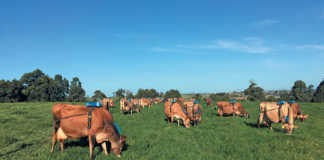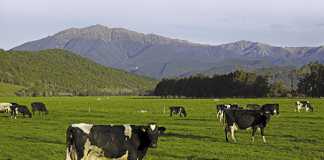Traditional African leafy vegetables hold several advantages over the many exotic vegetables that dominate our supermarket shelves. This is according to research conducted by the Water Research Commission (WRC) in partnership with the Department of Agriculture, Forestry and Fisheries.
READ: Southern Africa experiences a-surge in food insecurity
Why African leafy vegetables?
The study, carried out by a multi-disciplinary team of scientists in the crop, food and nutrition fields from the University of Pretoria, Tshwane University of Technology (TUT), and the Medical and Agricultural Research Councils, showed that the eight indigenous leafy vegetables studied were more drought- and heat-tolerant than the study’s reference crop, Swiss chard.
Cowpea (Vigna inguiculata) was the most drought-tolerant, followed by nightshade (Solanum retroflexum), pumpkin and tsamma melon. Amaranth (Amaranthus spp.) was the most heat-tolerant.
In general, African leafy vegetables tend to have a shorter growing season than exotic species and so use less water. Dr Gerhard Backeberg, executive manager at the WRC said: “Some of the plants provided more than 50% of the recommended daily allowance for vitamin A, and all eight vegetables studied provided at least 30% of the estimated vitamin A average requirement.”
The vegetables provided varying quantities of other important nutrients, such as protein and various mineral elements, as well as significant quantities of fibre. “Some of the most important traditional vegetable species, such as amaranth and spider flower (Cleome gynandra), are pioneer plants, which emerge naturally when soils are disturbed following cultivation,” explains Dr Backeberg.
“Commercial farming systems may regard them as weeds, but in African smallholder cropping systems they are often left to grow for later harvesting.”

The drought-tolerant tsamma melon is the ancestor of today’s commercial melon varieties.
Professor Wim van Averbeke of TUT’s Department of Crop Sciences believes that these indigenous plants show potential for improved food security and rural development. He says one in five South African families experience difficulty in accessing food, and the increasing dependence on social welfare grants is ultimately unsustainable.
The commission’s CEO, Dhesigen Naidoo, says: “These encouraging results are expected to provide an impetus for investment into making many of these outlier food sources into mainstream commercial crops to meet the global food security challenge.”
The Association for Dietetics in South Africa (ADSA) said that all green leafy vegetables, including African leafy vegetables, were a good source of anti-oxidants and fibre. It added that by making use of South Africa’s own natural resources for food production, people could help to improve the country’s self-sustainability.
ADSA president Berna Harmse explained that while there were no significant disadvantages with consuming the exotic vegetable varieties, it might be more economical to grow indigenous vegetables.
“It might also lead to a more varied diet for South Africans,” she says.
Call 012 330 0340 for free copies of the WRC reports: Nutritional
Value and Water Use of African Leafy Vegetables for Improved Livelihoods; Production Guidelines for African Leafy Vegetables; and Nutritional Status of South Africans: Links to Agriculture and Water.
Contact Dr Gerhard Backeberg at [email protected] or visit www.wrc.org.za













